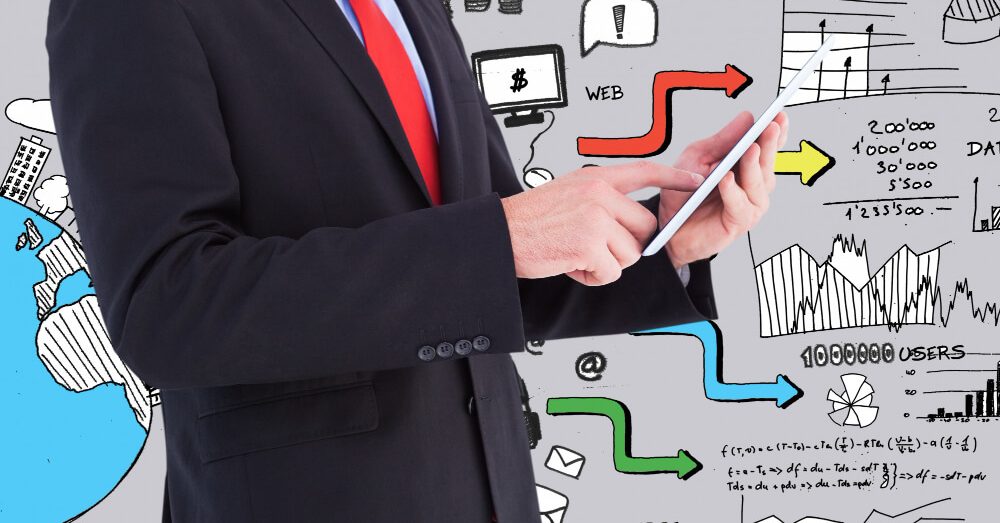What is CJM and why everyone should use it

Companies don’t always think about which way a customer goes to purchase a product or service. What problems he faces, what he lacks, and what he feels on the way to purchase.
This is all connected in a complex and long chain, where each element is essential. If something went wrong at one of the stages, the chain is interrupted, and a customer starts a new path with your competitors.
In marketing, the Customer Journey Map (CJM) is used to analyze customer behavior. It allows you to optimize work processes and reduce advertising budgets.
What is CJM?
CJM is the history of a customer’s interaction with a company from the moment of awareness of the need to repeated communications. It is compiled on behalf of the buyer, taking into account his goals, feelings, emotions, fears, and values.
What is the value of CJM?
CJM allows companies to understand who their target audience is, why they buy or go to competitors. What are the points of contact with the customer and why they do work or don’t.
The voice of a call center specialist, the availability of free parking spaces, the method of transmitting a business card can play a crucial role in choosing a customer.
Companies often work on the flow and do not think about small but significant details. CJM helps to see weaknesses, find ways to solve them and implement the results obtained.
How to make a CJM?
Step 1. Collect information
It is important to understand who is your customer.
With the help of surveys, studies, questionnaires, observations, and other methods of collecting and analyzing information, determine the target audience. Then there are 2 options:
- From the main groups of clients, you can form a core and work with it. It turns out an average customer and his travel card.
- Take several characters and make a CJM for each of them. In this case, the work will be longer and more time-consuming, but you will work out in detail each customer, his fears and ways to overcome them.
You can study a product (service) in detail: characteristics, customer reviews, competitors. Analyze the goals of buyers and their expectations.
At this stage, it is important to receive information both from the customers themselves and from employees who communicate with them every day and receive feedback.
Step 2. Determine the stages that a customer goes through
Interaction with a client can begin before he enters the store or office. Before that, he could visit the site, chat with friends, see ads. At each stage, he will have different goals, expectations and problems, so it is important to distinguish them.
Let’s distinguish the following stages:
- formation of awareness, search for information;
- choosing a company;
- study of the company’s website/ social networks/ online store;
- visiting the store (if there is one);
- conclusion of a contract (online/offline purchase);
- delivery, installation, and warranty service;
- maintaining communication, and attracting a buyer for repeat purchases.
Choose the stages suitable for your type of business.
Step 3. Define the goals, expectations of your character at each stage
Step 4. Identify points of contact
Points of contact are a variety of situations, places and interfaces of contact between the client and the company.
The points of contact can be divided into online and offline. This is the most convenient classification. Think about where the customer intersects with your organization. Write down the contact points. Pay attention to everything, even what you think is too small and unimportant. The more intersections you find, the more detailed you will be able to analyze voids, and weaknesses. Remember, even a lack of interaction can be a point of contact.
Examples of contact points:
Online:
- Advertising (context, SEO, target);
- PR
- Website
- The blog
- Social network
- Search engine output
- Chat bot
- Online Assistant
- Reviews
- Mobile Application
- Email newsletter
- Forums
- Online store
Offline:
- Advertising
- PR
- Office (if available): navigation, location, parking, signboard, greeting, atmosphere, cleanliness, meeting room, drinks
- Employees: appearance, voice, smile, sociability, knowledge, badge
- Store: before the store, the store itself, in the store
- Products: design, name, packaging, prices, instructions, guarantees
- Technologies
- Business processes
- Materials: advertising (business cards, price tags, signage) and commercial (price list, commercial offer)
- Phone: dialer numbers, greeting, answering machine, a voiceover to hold the call, forwarding
- TV advertising
- Radio advertising
- SMS mailing
Step 5. Define the Barriers
At each stage, the client encounters various problems. They prevent him from moving on to the next stage. No one likes difficulties. Therefore, the more barriers there are, the more likely brand loyalty will decrease and customers will leave.
To learn about barriers, you need to put yourself in clients’ place: think and act like them. Only then you’ll know about the problems you are facing. It is also good to analyze reviews, complaints, customer wishes.
Step 6. Identify ways to overcome barriers
You have done a lot of work (from 2 days to a couple of weeks) and have come to a stage that will allow you to reach a new level. Brainstorming sessions, new employees who have not yet “blurred their eyes”, the involvement of external consultants will help here. Your task is to make the client’s path as comfortable as possible, reduce the number of barriers to a minimum. It may be necessary to abandon something, reorganize the work, introduce new institutions and tools.
It will be useful to assess your financial capacity to make changes. It may be necessary to allocate priority innovations for which there is a budget, and a little later to close other voids.
Step 7. Select Additional Metrics
For someone, the selected indicators will be enough. But if you want to, add it. Consider the tasks of the marketer at each stage, the emotions of the client, KPI. Take as a basis everything that will bring you closer to the client.
Step 8. Visualize
Present all received information in a convenient way for you. You can use Google Spreadsheets, Touchpoint Dashboard, Sanvanizer, Realtimeboard, uxpressia.com, realtimeboard.com and Miro.
Some of them are free, some not, but you need to try it.
Conclusion
The goal of any product manager is to create a product that maximizes value for the customer. And CJM is just one of the tools that will definitely help you with this.
One of the key values of CJM is the ability to make estimates with your team and establish productive interaction with other departments. CJM is not only about solving a specific task but also about improving the performance of your product as a whole.
Search Blog
Categories
- Analytics(16)
- Android Development(1)
- Apps development(1)
- Branding(32)
- Branding solution(20)
- Business(20)
- Construction marketing(2)
- Design(12)
- Design and creative(15)
- Digital solution(14)
- Facebook(4)
- Google Ads(6)
- Graphics(9)
- Instagram(8)
- Marketing research(15)
- Marketing solution(20)
- Marketing strategy(23)
- PPC(9)
- SEO(12)
- SMM(18)
- Social media marketing(12)
- TikTok(5)
- Uncategorized(7)
- Video content(4)
- Video production(4)
- Web Design(4)
- Web Development(6)
- YouTube(3)
Categories
- Branding solution (2)
- Brand identity
- Brandbook
- Design and creative (2)
- Graphic design
- Illustration
- Marketing solution (4)
- Marketing
- Marketing research
- Marketing strategy
- Mystery shopping
- Didgital solution(4)
- Google, Facebook ADS
- Search Engine Optimisation
- Website development
- Digital marketing
- Social media marketing(5)
- Facebook marketing
- Instagram marketing
- LinkedIn marketing
- Complex SMM
- TikTok Marketing
- Video production(4)
- Short video production
- Video animation
- Video presentation
- YouTube Marketing
Our Top Articles
Recent Posts
- How CMCG Marketing Agency Helps Grow HVAC Businesses October 24, 2024
- Marketing Solutions for HVAC Companies September 13, 2024
- Working with Negativity on Social Media October 3, 2023
- The Difference Between Rebranding and Redesign October 2, 2023
- Font Marketing Development: The Power of Typography in Branding and Design September 28, 2023
Popular Tags
Advertising Analytics Artificial intelligence brand Brand book Brand identity Brand management Brand platform Brand positioning Brand recognition Brand visibility Content marketing Customer Journey Map Customer segmentation Digital advertising Digital marketing Facebook Google Ads Graphic design Influencer marketing Instagram Instagram post Landing page Logo design Marketing Marketing agency Marketing efficiency Marketing funnel Marketing strategy Native advertising Pack design PPC Reels SEO Short videos SMM Social Media Social Media Marketing SWOT analysis Target audience TikTok Tone of voice Website Website development YouTube

